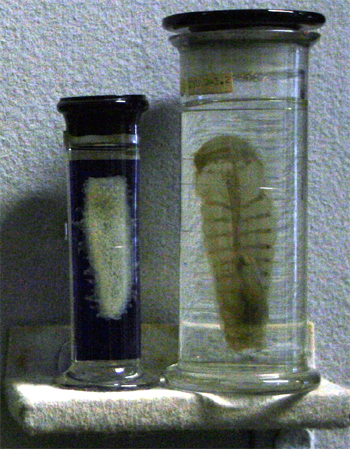
CLASSES THALIACEA AND LARVACEA | |
CLASS LARVACEASexually mature Larvaceans retain the organisation of the larva. Oikopleura albicans secretes a small house into which water is drawn by movements of its tail. A filtering apparatus strains food from the water. CLASS THALIACEAAdults of members of the class Thaliacea are typically tail-less. They move by jet propulsion forcing water through the barrel-like body by weak muscular contractions. Food is strained from the water as it passes through the body. Neither of the species illustrated here have larval stages and both undergo asexual as well as sexual reproduction. Right:
Below:
|
 |
 | |






